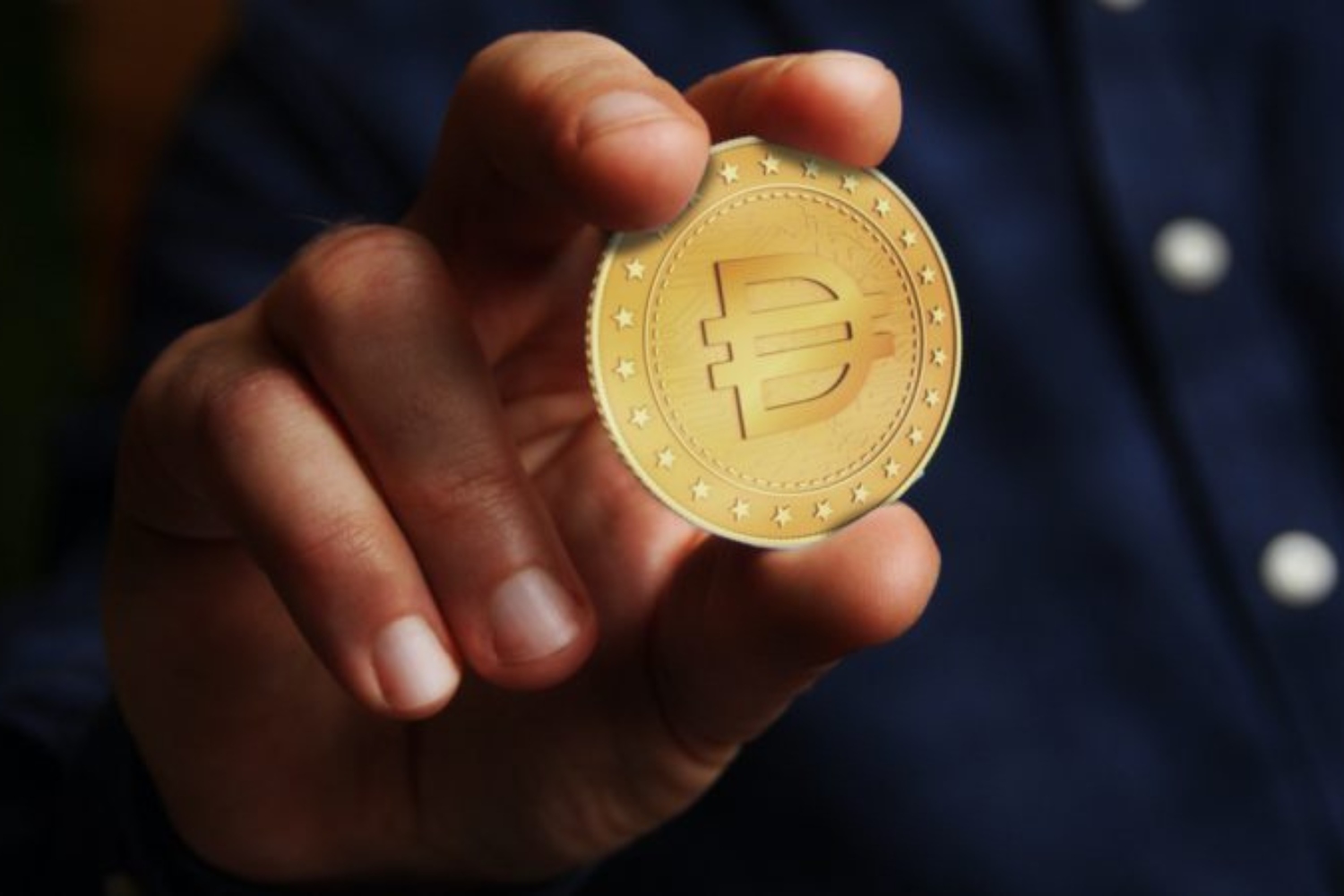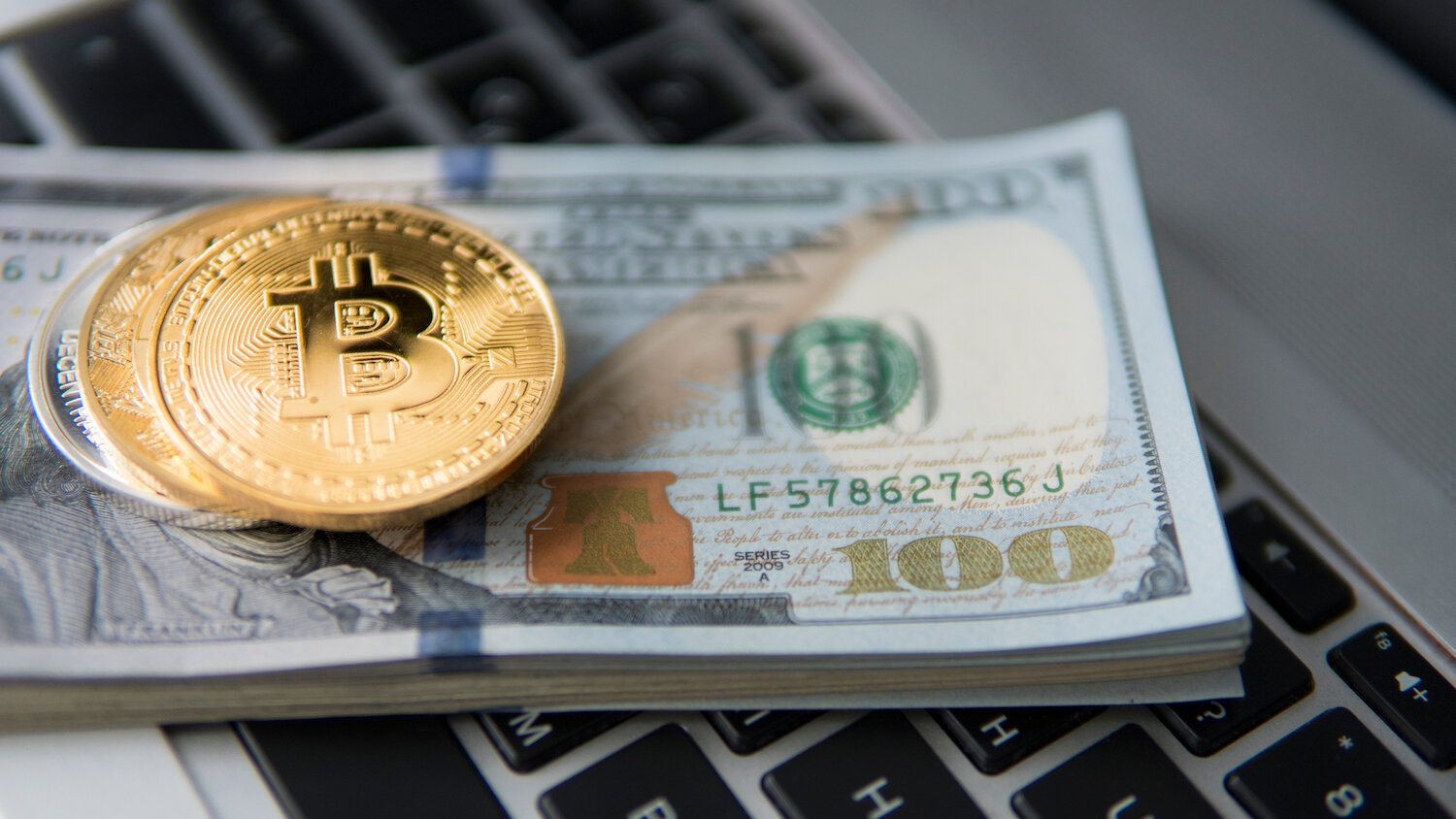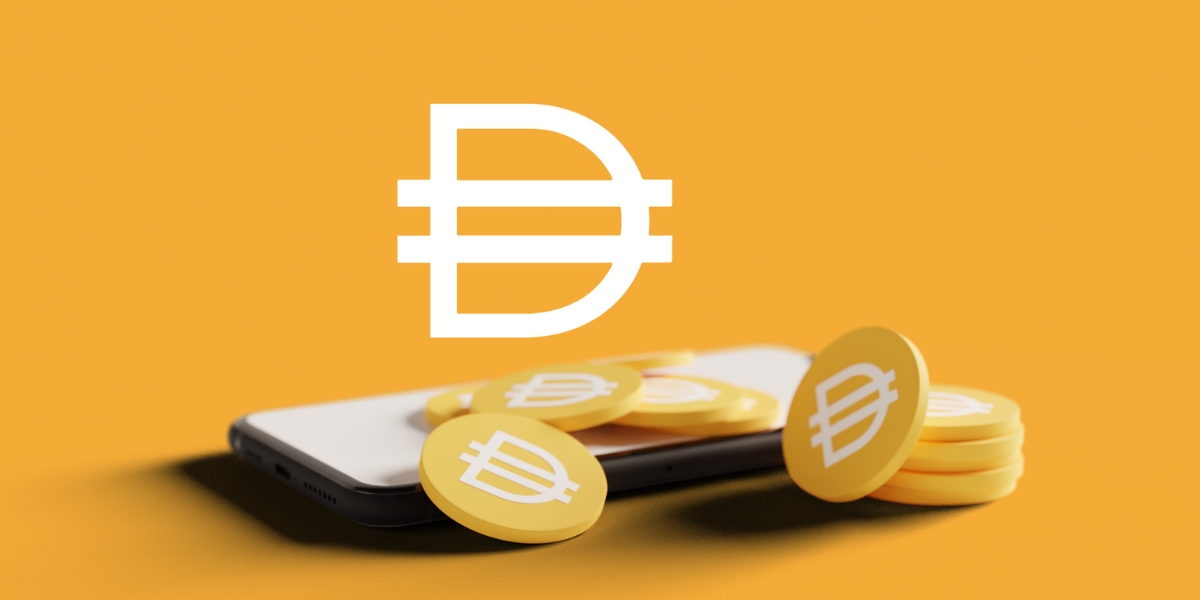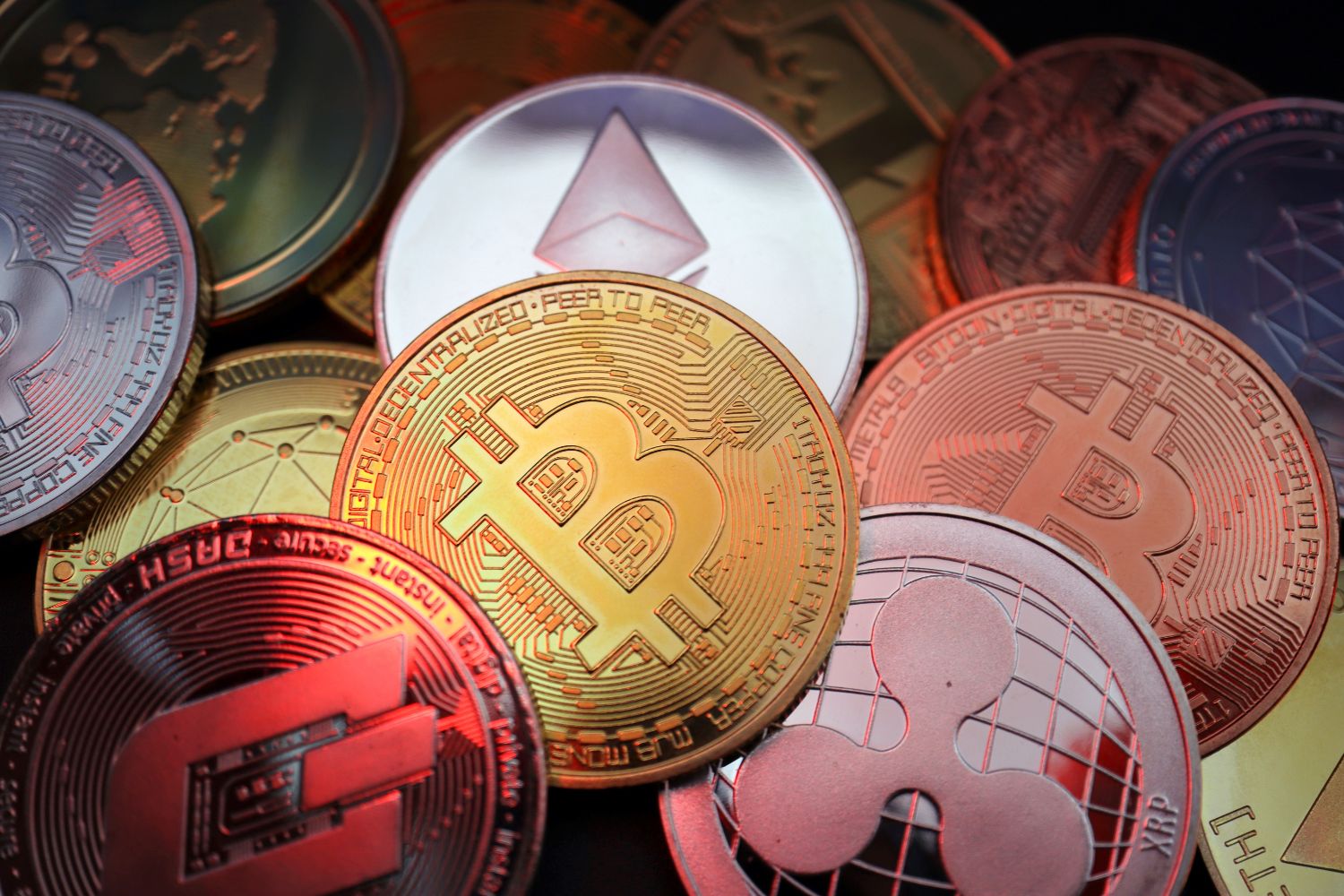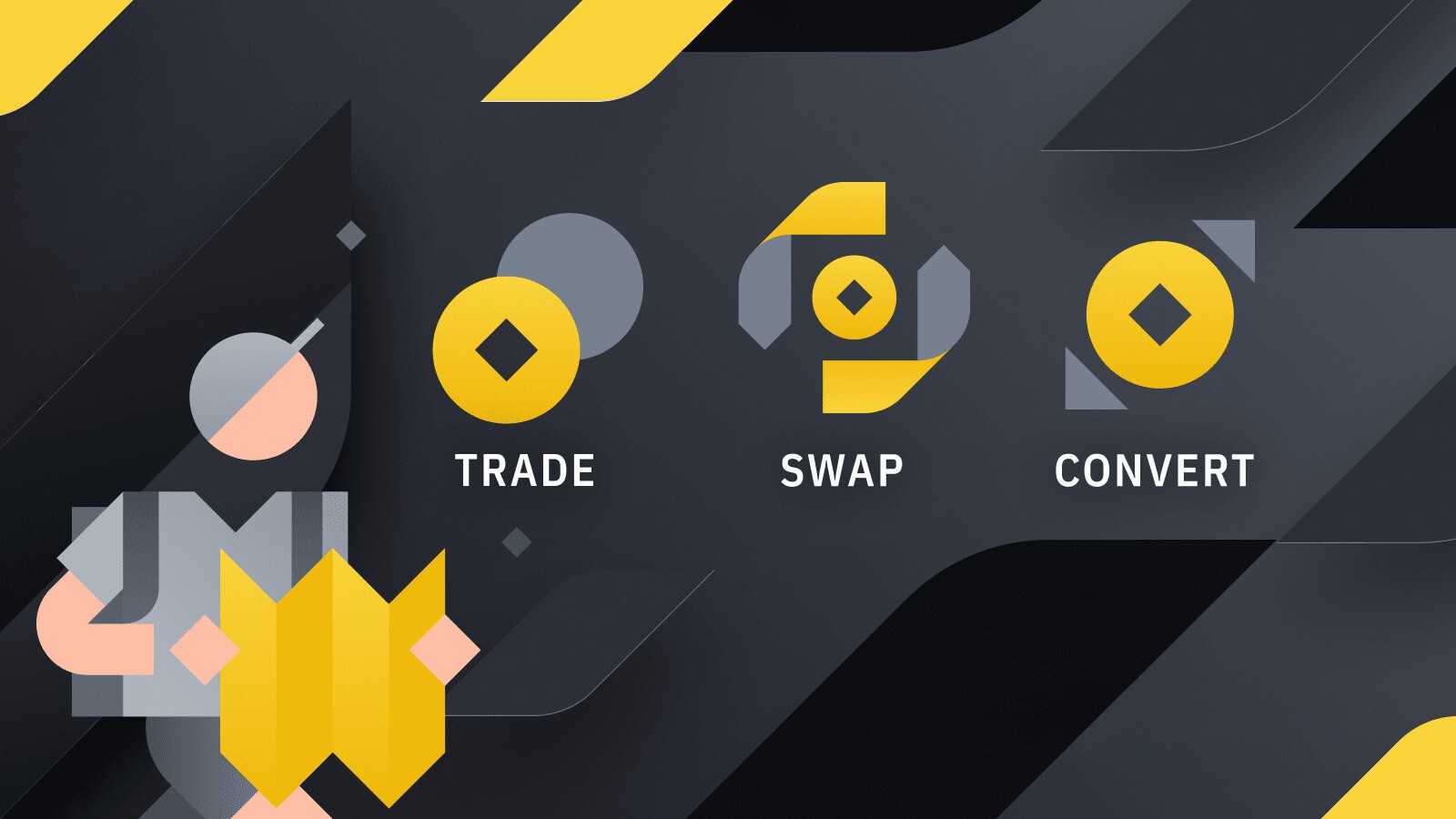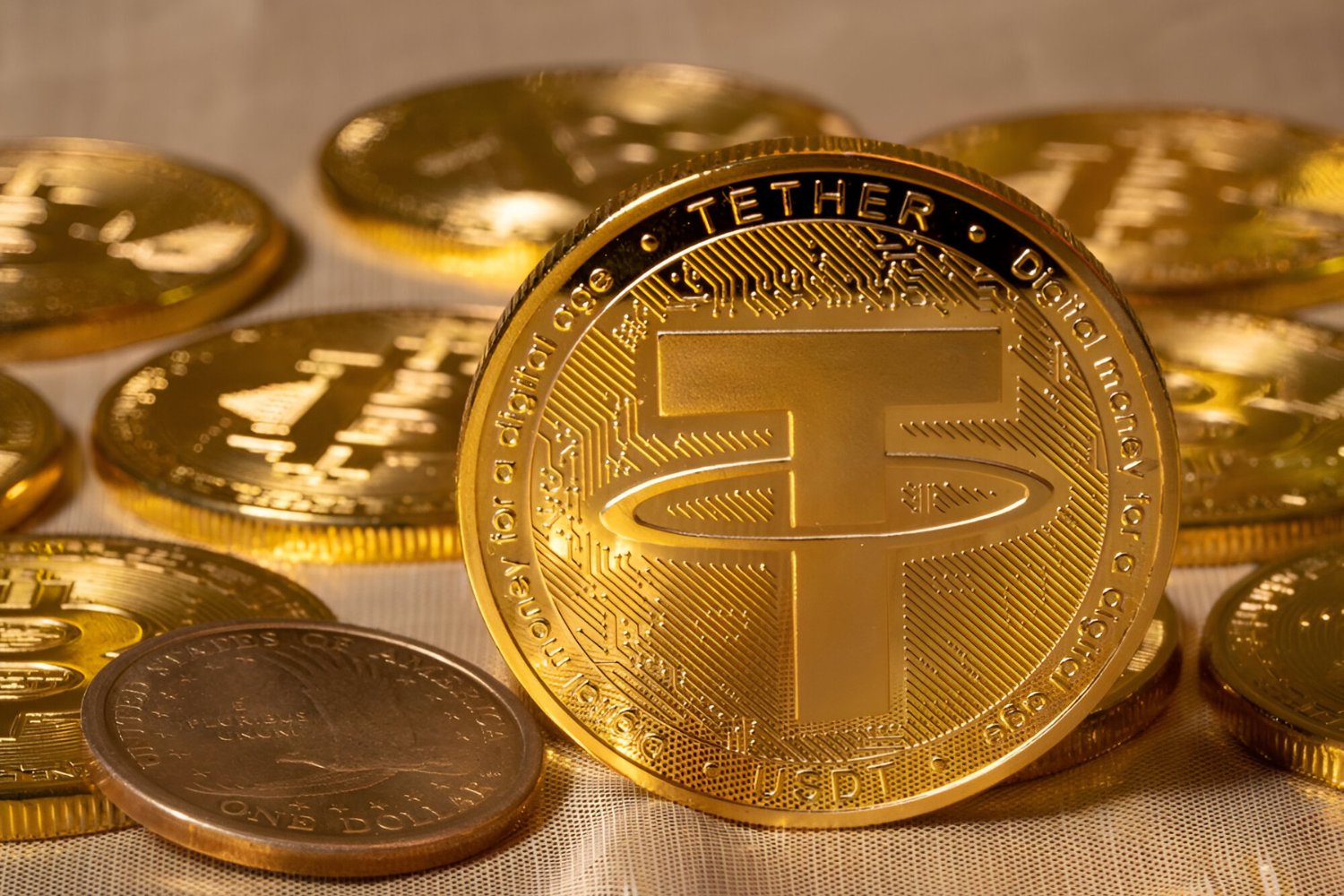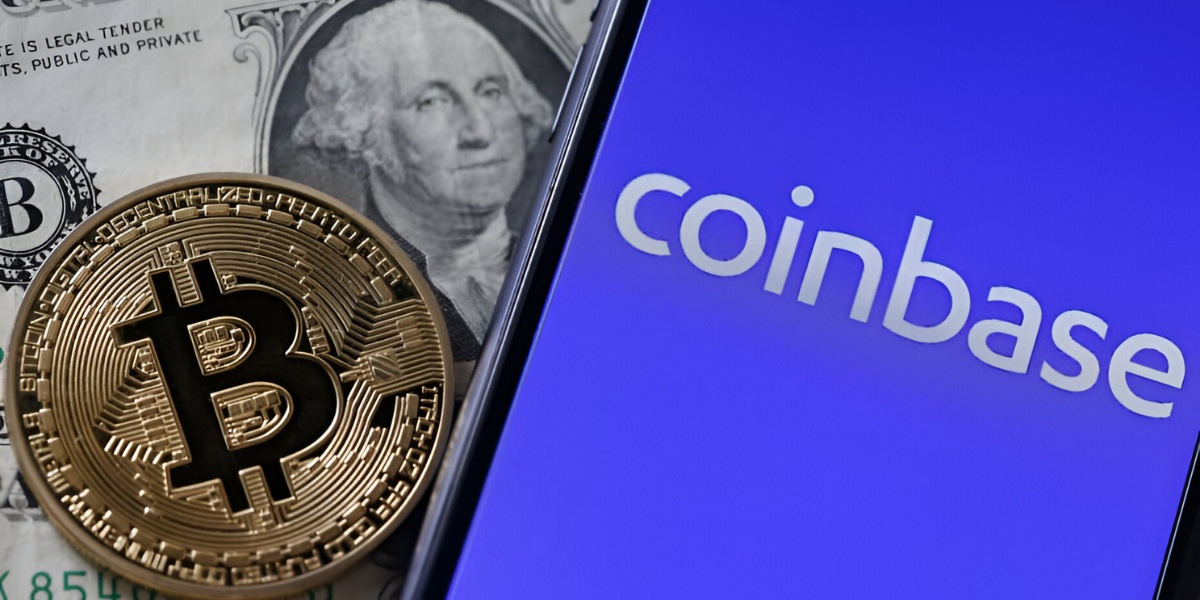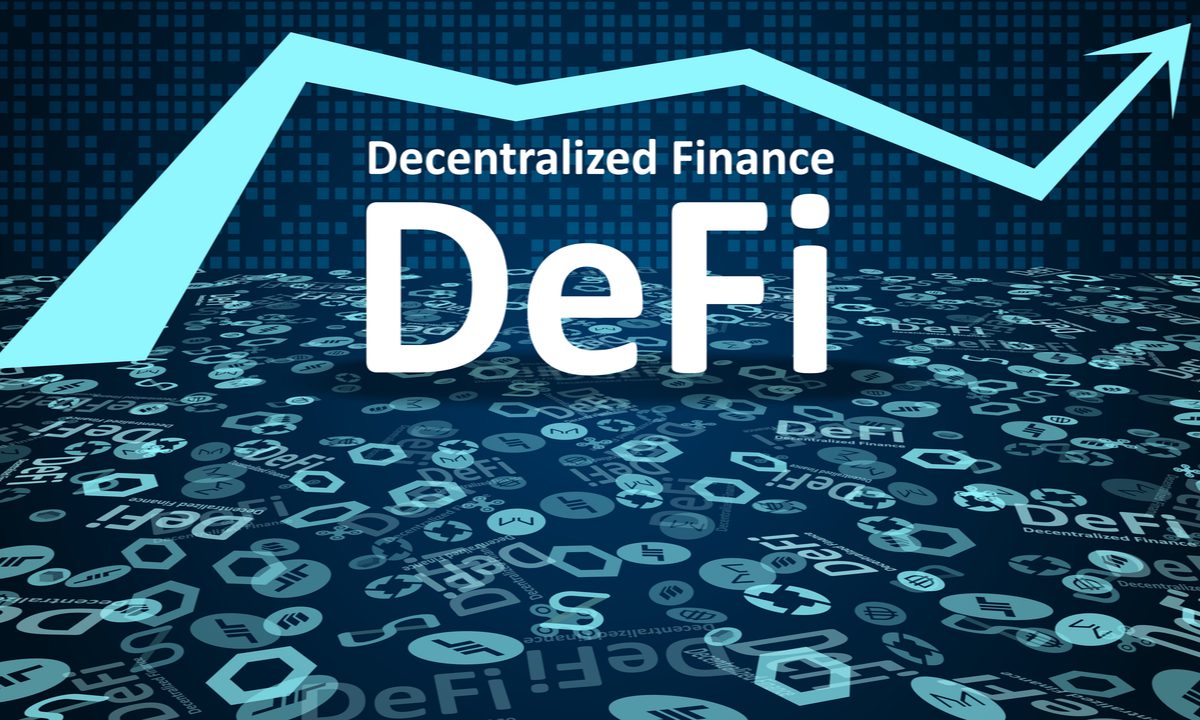Introduction
Welcome to the world of decentralized finance, where cryptocurrency continues to revolutionize the way we transact and store value. Among the many exciting digital assets available, one that stands out as a promising player in the stablecoin market is DAI crypto.
DAI is not your average cryptocurrency. Unlike volatile digital assets like Bitcoin or Ethereum, DAI aims to maintain a stable value equal to one United States dollar (USD). This stability is achieved through an ingenious system of smart contracts and decentralized governance.
As the demand for stablecoins grows, DAI has emerged as a popular choice due to its unique approach. In this article, we will delve into what exactly DAI is, how it works, its benefits, risks, and how you can use it in your financial endeavors.
So, without further ado, let’s dive into the fascinating world of DAI crypto and explore its inner workings.
What is DAI Crypto?
DAI is a decentralized stablecoin built on the Ethereum blockchain. Unlike traditional cryptocurrencies such as Bitcoin, which experience price volatility, DAI is designed to maintain a stable value equal to one United States dollar (USD). It achieves this stability through an innovative combination of smart contracts and collateralization.
The DAI stablecoin is governed by the MakerDAO, a decentralized autonomous organization (DAO). MakerDAO is responsible for maintaining the stability of the DAI token and ensuring that its value remains pegged to the USD. This is accomplished through a combination of automated mechanisms and human governance.
One of the key features of DAI is its collateralization system. To create DAI, users must lock up collateral, typically in the form of other cryptocurrencies like Ether (ETH), as security. This collateral acts as a guarantee to maintain the stability of DAI and ensures that the value of DAI is backed by real-world assets.
Furthermore, the MakerDAO system employs a dynamic collateralization ratio. This means that the required amount of collateral to create DAI fluctuates based on market conditions. During times of high volatility or increased risk, more collateral may be required to secure the value of DAI. Conversely, during periods of stability, less collateral may be needed.
By leveraging the transparency and security of the Ethereum blockchain, DAI provides users with a decentralized and trustless stablecoin solution. It enables individuals and businesses to transact in a cryptocurrency that maintains a stable value, reducing the uncertainty and risks associated with price fluctuations.
Now that we have an understanding of what DAI crypto is, let’s take a closer look at how it works and the mechanisms behind its stability.
How Does DAI Work?
At its core, DAI operates through a combination of smart contracts and decentralized governance. The MakerDAO system, which governs DAI, utilizes several key components to maintain the stable value of the token.
First and foremost, DAI is created through a process known as “collateralized debt position” (CDP). Users lock up collateral, typically in the form of Ether (ETH), in a smart contract known as a CDP. The collateral is held as security and allows users to generate DAI tokens against the value of their locked assets.
The amount of DAI that can be generated from a CDP depends on the collateralization ratio. This ratio dictates the minimum amount of collateral required to support a given amount of DAI. For example, if the collateralization ratio is set at 150%, then a user would need to provide $150 worth of collateral for every $100 worth of DAI created.
The key to maintaining the stability of DAI lies in the management of the collateralization ratio. If the value of the collateral starts to decrease, the ratio may fall below the specified threshold. In such a case, the system can trigger an automatic liquidation process to protect the value of DAI.
When a CDP is liquidated, the collateral is sold off to repay the generated DAI. This mechanism ensures that the value of DAI remains stable and backed by tangible assets. Liquidity providers, known as Keepers, play a vital role in this process by monitoring the system for opportunities to profit from liquidations.
Additionally, MakerDAO incorporates an incentive mechanism called the Stability Fee. This fee is charged to DAI users who generate new DAI through their CDPs. The Stability Fee serves two purposes: it incentivizes users to manage their debt responsibly and it helps control the supply of DAI in the market.
The decentralized governance structure of MakerDAO allows MKR token holders to participate in decision-making for the protocol. MKR token holders can vote on governance proposals and make important decisions regarding the stability and development of the DAI ecosystem. This democratic approach ensures that the stability and integrity of DAI are maintained in a decentralized manner.
By combining these mechanisms, DAI achieves its primary goal of providing a stable and decentralized cryptocurrency that avoids the extreme price volatility often associated with other digital assets. In the next section, we will compare DAI to other stablecoins to gain a better understanding of its unique characteristics.
Stability Mechanisms of DAI
The stability of DAI is maintained through a series of mechanisms designed to ensure its value remains pegged to the United States dollar (USD). These mechanisms work together in a decentralized and automated manner to stabilize the DAI token. Here are the key stability mechanisms of DAI:
- Collateralization: DAI is backed by overcollateralization, where users must lock up a certain amount of collateral, such as Ether (ETH), to generate DAI. This collateral acts as a guarantee and ensures that the value of DAI remains stable. The collateralization ratio dictates the minimum amount of collateral required for each DAI generated.
- Automatic Liquidations: To maintain stability, if the value of the collateral falls below the required collateralization ratio, the system triggers an automatic liquidation process. This process sells off the collateral to repay the generated DAI, safeguarding the stability and value of the token.
- Stability Fee: The Stability Fee is an ongoing interest rate that DAI borrowers must pay on their generated DAI. It serves two purposes: incentivizing responsible borrowing practices and controlling the supply of DAI. The Stability Fee is determined collectively through on-chain voting by MKR token holders.
- Target Rate Feedback Mechanism (TRFM): The TRFM is a feedback mechanism that influences the Stability Fee. It takes into account the market demand for DAI and aims to keep the value of DAI as close to the target price of 1 USD as possible. If the demand for DAI is high, the Stability Fee adjusts accordingly to encourage more generation of DAI and vice versa.
- Oracles: Oracles are a critical component of DAI’s stability mechanisms. They provide external data, such as market prices, to the smart contracts governing DAI. Oracles help ensure that the prices and values used within the system are accurate and up to date, allowing for proper collateralization and liquidation processes.
These stability mechanisms work in harmony to maintain the stability of DAI and to ensure that the value of DAI remains equivalent to one USD. By utilizing collateral, implementing automatic liquidations, employing a Stability Fee, adjusting based on market demand, and relying on oracles for accurate data, DAI achieves a robust and decentralized stablecoin ecosystem.
Now that we have explored the stability mechanisms behind DAI, let’s compare it to other stablecoins to gain a better understanding of its unique qualities.
DAI vs Other Stablecoins
Stablecoins have gained significant attention in the world of cryptocurrencies due to their ability to provide stability and reduce the volatility commonly associated with digital assets. While there are several stablecoins available in the market, DAI stands out as a unique and innovative solution. Let’s compare DAI to other stablecoins to understand its distinct qualities:
1. Centralized vs. Decentralized: Many stablecoins, such as Tether (USDT) or USD Coin (USDC), are centralized, meaning they are backed by traditional assets held in reserve by a central entity. In contrast, DAI is a decentralized stablecoin, backed by collateral held in smart contracts on the Ethereum blockchain. This decentralized approach provides increased transparency, immutability, and resistance to censorship, making DAI more resilient and censorship-resistant.
2. Collateralization: DAI differentiates itself by utilizing collateral to back its stable value. This collateral is held in smart contracts and is subject to automatic liquidations if the value of the collateral falls below a certain threshold. This mechanism ensures that DAI remains backed by tangible assets, offering a greater level of stability than some other stablecoins which rely solely on trust in the issuing entity.
3. Governance: MakerDAO’s decentralized governance model allows MKR token holders to actively participate in the decision-making process. This includes determining the Stability Fee, modifying collateral types, and overall protocol governance. In contrast, many other stablecoins have a more centralized governance structure, where decisions are made by a central authority without community involvement.
4. Transparency: DAI’s operations are transparent, thanks to the use of smart contracts on the Ethereum blockchain. Users can easily verify the collateralization, liquidation processes, and other important aspects of DAI. By contrast, some centralized stablecoins may lack such transparency, as their operations are not always visible to the public.
5. Price Stability: DAI’s target price of 1 USD is maintained through various mechanisms, such as the Stability Fee and the Target Rate Feedback Mechanism. This ensures that DAI closely tracks the value of the USD. While other stablecoins also aim to maintain a stable value, DAI’s robust mechanisms and decentralized nature provide added confidence in its stability over time.
It is important to note that different stablecoins cater to various use cases and preferences. Some users may prefer the simplicity and convenience of centralized stablecoins, while others may value the decentralized and transparent nature of DAI. The choice ultimately depends on individual needs, risk tolerance, and desired level of control.
Now that we understand the unique qualities of DAI compared to other stablecoins, let’s explore the benefits and advantages of using DAI.
Benefits of DAI Crypto
DAI crypto offers numerous benefits that make it an attractive option for individuals and businesses seeking a stable and decentralized digital currency. Let’s explore some of the key advantages of using DAI:
1. Stability: DAI’s primary objective is to maintain a stable value equal to one United States dollar (USD). This stability shields users from the extreme price volatility commonly associated with other cryptocurrencies, offering a reliable medium of exchange and store of value.
2. Decentralization: DAI operates on the Ethereum blockchain, a decentralized network that ensures transparency and immutability. With no central authority controlling DAI, users can trust that the stablecoin is not subject to the whims or governance decisions of a single entity.
3. Trustless Transactions: DAI enables peer-to-peer transactions without the need for intermediaries, such as banks or payment processors. This allows for faster and more affordable cross-border transactions, eliminating the need for traditional banking services and reducing transaction fees.
4. Global Accessibility: DAI is accessible to anyone with an internet connection and a compatible wallet. Its decentralized nature ensures that users from anywhere in the world can obtain and use DAI without the restrictions and barriers often associated with traditional financial systems.
5. Programmable Money: DAI, being built on the Ethereum blockchain, benefits from the programmability of smart contracts. This opens up a world of possibilities for developers, enabling them to create innovative financial applications and services on top of the DAI stablecoin.
6. Diverse Use Cases: DAI’s stability and programmability make it versatile in various financial use cases. It can be used for remittances, decentralized finance (DeFi) applications, lending and borrowing, stable savings, and even as a stable unit of account for businesses.
7. Secure and Transparent: DAI operates on the secure Ethereum blockchain, leveraging its robust infrastructure and built-in security features. The use of smart contracts ensures transparent operations, as each transaction and process is recorded on the blockchain and can be verified by anyone.
8. Community Governance: The MakerDAO community, consisting of MKR token holders, actively participates in governing the DAI stablecoin. This democratic approach allows users to have a say in the decision-making process and ensures that the stability and integrity of DAI are maintained in a decentralized manner.
These benefits collectively make DAI an appealing choice for individuals and businesses looking for a stable and decentralized cryptocurrency. Whether it’s for everyday transactions, savings, or participating in the world of decentralized finance, DAI offers a reliable and innovative solution.
Now that we’ve explored the benefits of DAI, let’s discuss the risks and considerations associated with using this stablecoin.
Risks and Considerations of DAI
While DAI crypto offers many advantages, it is important to be aware of the potential risks and considerations associated with using this stablecoin. Here are a few key points to keep in mind:
1. Market Volatility: Although DAI aims to maintain a stable value, it is important to note that the cryptocurrency market as a whole can be volatile. Changes in market conditions, such as extreme price fluctuations in the underlying collateral assets, can impact the stability of DAI.
2. Liquidation Risks: DAI’s collateralization mechanism relies on maintaining a healthy ratio between the value of the collateral and the generated DAI. If the value of the collateral falls drastically, it may trigger automatic liquidations, resulting in the loss of the locked collateral.
3. Smart Contract Risks: DAI is built on smart contracts, which are software programs vulnerable to coding errors and security vulnerabilities. While efforts are made to ensure the security of the contracts, there is always a small risk of exploits or attacks that could impact the stability or integrity of DAI.
4. Regulatory Uncertainty: Cryptocurrencies, including stablecoins, are subject to regulatory scrutiny and evolving legal frameworks. Changes in regulations and government interventions could impact the usability and acceptance of DAI in certain jurisdictions, creating uncertainties for users.
5. Market Demand and Liquidity: The availability and liquidity of DAI may vary depending on market conditions and demand. In times of high demand or during periods of extreme market volatility, the ability to buy or sell DAI may be limited, potentially affecting its usability as a stablecoin.
6. User Error and Responsibility: DAI operates in a decentralized manner, which means users are solely responsible for managing their interactions with the system. If users fail to understand the processes, manage their collateral, or comply with the rules, they could face financial losses or other negative consequences.
7. Technology Risks: As with any technology, there are always risks associated with hacks, system failures, or disruptions in the underlying infrastructure. Users need to be cautious about the security of their wallets, third-party platforms, and the overall stability and reliability of the blockchain network.
It is important to conduct proper due diligence and understand the risks involved before engaging with DAI or any other cryptocurrency. Users should consider their risk tolerance, investment objectives, and seek professional advice if needed. Adopting secure practices and staying informed about the latest developments can help mitigate potential risks.
Now that we have discussed the risks and considerations, let’s explore how to use DAI in your financial endeavors.
How to Use DAI
Using DAI in your financial endeavors is relatively straightforward, and it offers a range of possibilities. Here are the steps to start using DAI:
1. Acquire DAI: The first step is to acquire DAI tokens. You can obtain DAI from cryptocurrency exchanges that support DAI trading pairs or from decentralized exchanges (DEXs) on the Ethereum blockchain. Alternatively, you can also create DAI by locking up collateral in a CDP within the MakerDAO ecosystem.
2. Store DAI: After acquiring DAI, it’s essential to store it securely. You can use a compatible cryptocurrency wallet, such as MetaMask or MyEtherWallet, to store your DAI tokens. Make sure to follow best security practices, such as using hardware wallets or keeping backups of your wallet’s private keys or seed phrases.
3. Transact with DAI: With your DAI stored in a wallet, you can use it for various transactions. DAI can be easily sent and received to and from other wallet addresses. You can use DAI for everyday purchases, cross-border remittances, payments to merchants, or peer-to-peer transactions.
4. Explore DeFi Applications: DAI is widely used within the decentralized finance (DeFi) ecosystem. You can lend or borrow DAI on platforms like Compound and Aave, earn interest on DAI deposits through yield farming protocols, or utilize DAI as collateral to access liquidity in decentralized lending platforms.
5. Convert DAI: If you need to convert DAI to another cryptocurrency or traditional fiat currency, you can use cryptocurrency exchanges or decentralized exchange platforms that support DAI trading pairs. This allows you to trade DAI for other cryptocurrencies or transfer it to your bank account, depending on the available options.
6. Stay Informed: As technology and the crypto space evolve, it’s essential to stay informed about updates and developments related to DAI. Keep an eye on official announcements, community forums, and reputable news sources to stay updated on any changes in the DAI ecosystem, such as protocol upgrades or governance decisions.
Remember to take precautions while using DAI, such as double-checking wallet addresses before making transactions, verifying the security of third-party platforms, and understanding the risks associated with interacting with the DeFi ecosystem.
Now that you have a basic understanding of how to use DAI, let’s summarize what we’ve learned so far.
Conclusion
DAI crypto presents an innovative and decentralized solution to the challenge of creating a stable digital currency. By combining smart contracts, collateralization, and decentralized governance, DAI maintains a stable value equal to one United States dollar (USD).
We explored the key aspects of DAI, including its stability mechanisms, benefits, risks, and how to use it. DAI stands out among other stablecoins due to its decentralized nature, transparent operations, and community governance through the MakerDAO system.
The stability of DAI offers numerous benefits, including the ability to transact without the volatility associated with traditional cryptocurrencies, global accessibility, and programmability. DAI’s decentralized design promotes trustless transactions and provides individuals and businesses with a reliable medium of exchange and store of value.
However, it is important to be mindful of the potential risks and considerations associated with using DAI. Market volatility, liquidation risks, smart contract vulnerabilities, regulatory uncertainties, and other factors should be carefully considered before engaging with DAI or any other cryptocurrency.
To start using DAI, one must acquire the stablecoin from exchanges or create it through collateralized debt positions (CDPs). Storage of DAI should be done securely using compatible cryptocurrency wallets, and users can engage in various transactions, explore decentralized finance (DeFi) applications, and convert DAI to other assets as needed.
As the world of cryptocurrencies continues to evolve, DAI remains an intriguing option for individuals and businesses seeking stability and decentralization. By harnessing the power of blockchain technology and the principles of decentralized finance, DAI has the potential to revolutionize the way we transact and store value in the digital age.
Whether you choose to utilize DAI for everyday transactions, explore DeFi opportunities, or simply diversify your cryptocurrency portfolio, it is crucial to stay informed, exercise caution, and understand the risks associated with using digital assets.
We hope this article has provided you with valuable insights into the world of DAI crypto and has helped you make more informed decisions as you navigate the exciting realm of decentralized finance.







